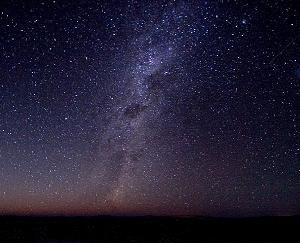The Sky Tonight

Credit: The Schools' Observatory
The links below show pictures of where in the sky the planets will be in the sky tonight. The pictures also show the Moon and the patterns of the stars (constellations) around them. Because the The Schools' Observatory is in the UK, the pictures show the view from the UK.
It is possible to see the 5 planets closest to Earth with the naked eye. These planets are Mercury, Venus, Mars, Jupiter, and Saturn. They look like very bright stars. They appear to move across the stars at night. Mercury is the hardest to spot because it is never very far from the Sun. If you want to see Uranus or Neptune you need to use a telescope.
The 8 planets of our Solar System all orbit the Sun at different speeds. This means we see the planets at different times each year. Astronomers use their knowledge of the movements of planets to predict where and when they will be visible in the night sky.
The 'Horizon View' pictures show maps of the night sky for each of the compass points: north, east, south, west. Make sure to note down which map the planet appears in before you go looking for it.
The 'Whole Sky' pictures show the entire sky as a big round picture. Imagine you are standing on a hill somewhere dark and looking straight up. The horizon surrounds you, at the edge of the picture. The Sky Map Help page explains why. It may take a bit of practice to get used to these pictures, but after a while you will find them very useful.
Choose from:
| 6PM | Horizon View | Whole Sky |
| 8PM | Horizon View | Whole Sky |
| 10PM | Horizon View | Whole Sky |
| Midnight | Horizon View | Whole Sky |
| 2AM | Horizon View | Whole sky |
| 4AM | Horizon View | Whole sky |
| 6AM | Horizon View | Whole sky |
| 8AM | Horizon View | Whole sky |

